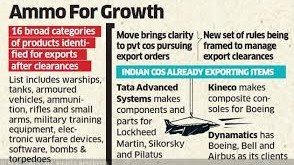Unmanned aircraft systems (UAS), which are going through a massive development phase, are finding their purpose in the shipping industry as well. In the shipping industry, drones have typically been used for security, environmental surveillance, emergency response, search and rescue missions, as well as various vessel inspections. Now Shipping companies and US Navy are experimenting with drones for delivering cargo autonomously with UAVs between shore-to-ship, ship-to-ship, and ship-to-shore.
Ships at sea are literally islands unto themselves therefore they are generally self-sufficient well equipped with spare parts and even with raw materials and the tools needed to fabricate most of what they can’t store. However, any unexpected incident may require delivery of some critical spare part or store to avoid delay or danger to crew. The common options are dispatching another ship or helicopter if ship is close enough to shore are costly therefore shipping companies are experimenting with drone deliveries to and from ships at sea. These systems have proven their ability to speed up deliveries, cutting lead times typically seen on traditional forms of last mile delivery.
The drones may also be useful for large sized supertankers which are loaded and unloaded at offshore oil terminals, over dozens of nautical miles offshore. These tankers often find themselves in need of shuttling documents, mail, small supplies, and even cash back and forth to shore while waiting for cargo operations to complete, sometimes for days. Maersk shipping line recently performed an experiment with drone delivery to a tanker at sea. Originally intended to deliver a symbolic package — a box of cookies — to the Maersk Edgar while underway a kilometer off Copenhagen, bad weather meant they had to cheat a bit. The octocopter, specially built to operate safely over the tanker and not pose a fire risk in case of a crash, was piloted from a small boat 250 meters away from the tanker and dropped the payload without incident.
With a quicker response rate and turnaround time of up to 6 times, drones have the potential to lower shore-to-ship delivery costs by up to 90% in some ports, significantly mitigate risks of personnel accidents and have a reduced carbon footprint.
Marius Johansen, VP Commercial, Ships Agency at Wilhelmsen Ships Service, said that shore-to-ship deliveries via UAS bring improved safety, productivity and reactivity by replacing the manual delivery of parcels by agents via launch boat with autonomous drones.
SKYF drone is made by a private Russian company; it is one of the largest drones we’ve ever seen. It can carry a 400-pound (181-kg) payload and fly for up to eight hours. It has as a maximum flight speed of 70 kilometers per hour (43.5 miles per hour). The autonomous drone was designed with logistics and agribusinesses in mind. The vertical take-off and landing drone has applications in areas such as the aerial application of pesticides, seed planting and food and medicine delivery. It uses gasoline powered engines for lift and electric motors for navigation.
US Navy also wants the ability to deliver cargo autonomously with UAVs between shore-to-ship, ship-to-ship, and ship-to-shore. U.S. Navy unmanned aerial vehicle (UAV) experts are inviting industry to participate in experiments to demonstrate ways of using UAVs to deliver cargo to and from ships at sea.
Wilhelmsen to Trial Shore-to-Ship Drone Delivery in Singapore
Global ships agency Wilhelmsen is teaming up to aeronautics company Airbus to bring shore-to-ship drone delivery to Port of Singapore.
The new service, called Agency by Air, is set to launch at Singapore port’s Marina South Pier in the third quarter of 2018, where Wilhelmsen Ships Service and Airbus will be piloting the delivery of spare parts, documents, water test kits and 3D printed consumables via Airbus’ Skyways unmanned air system (UAS) to vessels at anchorage.
With the signing of an MOU at maritime trade show Posidonia, the Maritime UAS project agreement covers a joint ambition to establish a framework for cooperation between the two partners, with the aim of investigating the potential deployment and commercialization of UAS for maritime deliveries use cases.
We will also be looking at developing an end-to-end design and implementation plan, such as forecasting the number of drones required from a logistical perspective with the volume,” according to Johansen.
Wilhelmsen Ships Service said that the key to successful implementation of drone technology and the realisation of the potential business, operational and cost benefits will depend on a number of factors. The first factor is technology, as despite the many use cases, the technology does face some challenges, such as limited battery life and difficulty operating in poor weather, according to Johansen. But original equipment manufacturers and major shippers are keen to improve the technology further and extend the reach and scope of what can be done with drones, he added.
With the current UAS technology, drones are capable of making last mile deliveries for critical documents, vital medical supplies and lighter weight spare parts of up to 4kg. The technological potential with drones is immense, Johansen said, adding that “in the future, when the technology allows a greater range and heavier payload, we will likely see an exponential increase of UAS usage.”
“The second is the uneven regulatory landscape. Regulations from both the aviation and maritime authorities can potentially be a show-stopping obstacle when it comes to rolling out a global drone delivery service, since the regulations are different in each and every country.” He added, however, that development of relevant regulatory and safety framework is slowing the take-up of UAS technology, “but it is necessary and when it comes to safety it is wise to be thorough and pragmatic.”
US Navy’s Special Notice for Autonomous Cargo-Unmanned Aerial System Experiment
The United States Navy desires the capability to autonomously deliver cargo with an unmanned aerial system (UAS) between shore-to-ship, ship-to-ship, and ship-to-shore. During the week of 25 March 2019, the Navy will hold a limited objective experiment to identify and evaluate solutions to address this need.
The objective of this experiment is to autonomously transport a 20 pound payload with an unmanned aerial vehicle (UAV). UAV shall autonomously launch from a fixed shore base, navigate through two waypoints to a vessel in open water making bare steerageway at 3-5 knots (kts) no less than 25 nautical miles (NM) away, loiter for 10 minutes, then autonomously land aboard the vessel. The UAV will then be required to autonomously launch from the vessel with the same 20 pound payload and return to the initial shore-based launch site.
The air vehicle must make the round trip without refueling (refueling or recharging will not be permitted aboard the vessel). Participants must provide a refueling/recharging demonstration at the shore site after landing. En-route, the UAV may have GPS navigation, but Navy researchers prefer navigation that does not rely on GPS satellite navigation, and that has a low probability of intercept. No cargo UAVs will be allowed that are longer than 13 feet.
The UAV must transit at an airspeed no less than 40 knots and an altitude no greater than 2000 feet above ground level (AGL). The UAV must be capable of launching and recovering without a catapult, arresting net or cable, or other mechanical launching or recovery equipment.
Participants will provide data that validates the maximum theoretical range of their air vehicle with a 20 pound payload and with its maximum payload. Participants shall ensure that the UAV is equipped with a transponder with a minimum of a Mode-3/C capability.
References and Resources also include:
https://hackaday.com/2017/06/06/automate-the-freight-maritime-drone-deliveries/
https://gcaptain.com/wilhelmsen-to-trial-shore-to-ship-drone-delivery-in-singapore/
 International Defense Security & Technology Your trusted Source for News, Research and Analysis
International Defense Security & Technology Your trusted Source for News, Research and Analysis


